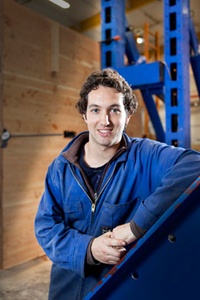Study into seismic design for timber buildings

A University of Canterbury (UC) research team is investigating a new type of design – combining a low-damage structural system with cross laminated timber (CLT) – for multi-storey timber buildings to successfully withstand earthquakes.
“This is the first time in the world that anyone has done this,” says UC researcher Andrew Dunbar.
“Cross laminated timber (CLT) panels are a new product to New Zealand and are made like plywood, with boards laid out in alternating directions. The difference is that CLT uses whole timber planks rather than thin veneers. Panels can be made from cheap low-grade material to produce a quality structural material.
“We are also using post-tensioned high strength steel tendons that clamp the CLT walls to the foundation. During an earthquake, the walls are allowed to rock and the high strength steel tendons act like rubber bands and snap the building back to its original position.
“This is the same concept that has been applied to the new Christchurch timber buildings in Victoria St, Birmingham Drive and the concrete Southern Cross Hospital Endoscopy building which was built before the earthquakes.”
Dunbar says two test specimens are the feature of their research a low seismic option and a high seismic option. The low seismic option is aimed at the Auckland and Australian markets, replacing concrete tilt panels and shear cores.
The high seismic option is aimed for the Christchurch and Wellington areas providing a low damage system with replaceable energy dissipaters that act as ductile fuses.
“Our cross design system gives connections a much higher capacity than traditional timber using nails or bolts. This can be achieved at a comparable cost to concrete or steel while providing added environmental and aesthetic benefits,” Dunbar says.
Final results from the research will be known at the end of the year.









